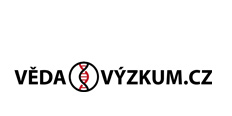The fourth annual Scientia Pragensis event took place as usually on the last Friday of November at the University of Economics, Prague. The science day hosted speakers from Prague’s institutions of higher education, who gave talks about the most recent developments and findings in their fields. Charles University was represented by Dr. Václav Matoušek from the Faculty of Humanities and Professor Zdeněk Sedláček from the 2nd
During the event, a total of ten speakers took the floor on November 26 in the auditorium of the University of Economics. Each institution – Czech University of Life Sciences, Czech Technical University, Charles University, University of Economics and the Institute of Chemical Technology – was represented by two researchers.
In the morning section, doc. PhDr. Václav Matoušek, CSc. from the Faculty of Humanities presented his research in archeology. He focuses on the archeological research of the early modern period, specializing in the battlefields of the Thirty Years War and industrial archeology.
Dr. Matoušek divided his talk into two parts, in the first of which he introduced the archeology of the early modern period as a young discipline inspired by both the Czech tradition of the archeology of the Middle Ages and general historical anthropology, mentioning notable experts in the field. In the second part, he presented particular research projects that have been undertaken as Master’s theses and dissertations by students of archeology at the Faculty of Humanities.
Prof. Ing. Zdeněk Sedláček, DrSc. from the Institute of Biology and Medical Genetics of the 1st
To introduce the profoundly complex topic, Professor Sedláček started his presentation by summing up the various data we can read in the human genetic information. Genome analysis has for example revealed a rather surprising fact that our gene count is not significantly higher than that of less complex organisms and that almost a half of our genome consists of parasitical repetitive sequences. We however differ from each other not only by occasional nucleotide exchanges, but also by larger-scale chromosome rearrangements.
(Lucie Kettnerová)
Translation: Jaroslav Švelch














